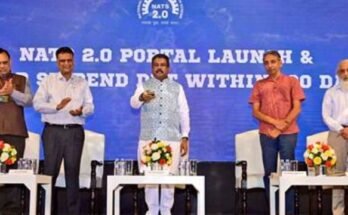New Delhi: The Union cabinet on Tuesday approved an outlay of Rs.10,000 crore for providing apprenticeship training to over 5 million youngsters in the next four years in its quest to create more jobs. This is the biggest monetary reward initiative in the last seven years for skill development in India. The money allocated will be provided as incentive to industries to take more apprentices on board.
The government has cleared a national apprentice promotion scheme, Union minister Ravi Shankar Prasad said after a cabinet meeting in Delhi chaired by Prime Minister Narendra Modi. “We are allocating Rs.10,000 crore for it,” he added. He said currently there are some 230,000 young people who are undergoing apprenticeship training or training on the shop floor at thousands of factories. The government plans to increase this to 5 million by 2019-20.
Apprenticeship training is considered the best way to create a pool of skilled work force, but India has been traditionally poor in its apprenticeship training efforts.
Asheesh Sharma, a joint secretary in the ministry of skill development and entrepreneurship, said that the number of apprentices are very low in India and there was the need for a structured incentive plan for uplifting this. “It is for the first time a scheme has been designed to offer financial incentives to employers to engage apprentices,” he said.
According to the new scheme, the central government will bear 25% of the stipend given to an apprentice by a factory. It means, if a company pays an apprentice Rs.8,000 per month, the central government will reimburse Rs.2,000 or 25% of it. Similarly, the Union government will shoulder 50% of the expense on academic training of an apprentice done either by a company or outsourced by it to a third-party trainer.
Sharma, who is also the director general of training, said government will pay Rs.7,500 per apprentice for their academic training and academic training will be of one-fourth duration of the apprenticeship training. It means, a youngster joining a company for one year as apprentice, can spend three months for academic training.
So, in a way, it will also boost the skill training companies commercially who will provide academic training to apprentices.
Sanjeev Duggal, chief executive of Centum Learning Ltd, a skill training company, said though he would not comment on the commercial benefit it will bring to the sector, the move will certainly promote apprenticeship. He said skill training without hands-on-training is incomplete, and the move will facilitate shop floor training of skill trainees. So, can it be called a huge skill subsidy scheme? “You may say so…it is aimed at creating a pool of manpower trained on the shop floor and ready to be deployed at work,” Sharma said. He said several countries are pushing for apprenticeship training—while Australia is pumping more than 1.5 billion Australian dollar, Canada is providing tax benefit for promotion of apprenticeship. He said countries like Germany and China too are betting big on apprenticeship.
According to skills ministry estimate, Germany has three million apprentices, and China 20 million, and that India must try to catch up to improve the availability of skilled manpower for various industry segments.
Addressing reporters in New Delhi, law minister Prasad said that people need to understand the architecture of the central government—“jobs and skills” is a huge focus of the Union government, he said. The cabinet approval comes in the wake of a slew of measures that the government has taken to boost employment.
Last month, the Union government relaxed rules for foreign direct investment in sectors ranging from pharmaceuticals to aviation. It also approved a package for the labour-intensive textiles sector, which the government believes has the potential to create 10 million jobs.
Sharma said his ministry is in touch with public sector enterprises to take more apprentices and take benefit of the incentives.
Though the Narendra Modi government has promised to create a lot of jobs, the situation so far is not very bright more so in the labour intensive manufacturing sector.
In 2014, eight key manufacturing and export-oriented sectors, including IT/BPO, textiles and automobiles, created less than half a million (421,000) jobs, and in 2015, the numbers were less than 200,000, according to the labor bureau.
Note: News shared for public awareness with reference from the information provided at online news portals



